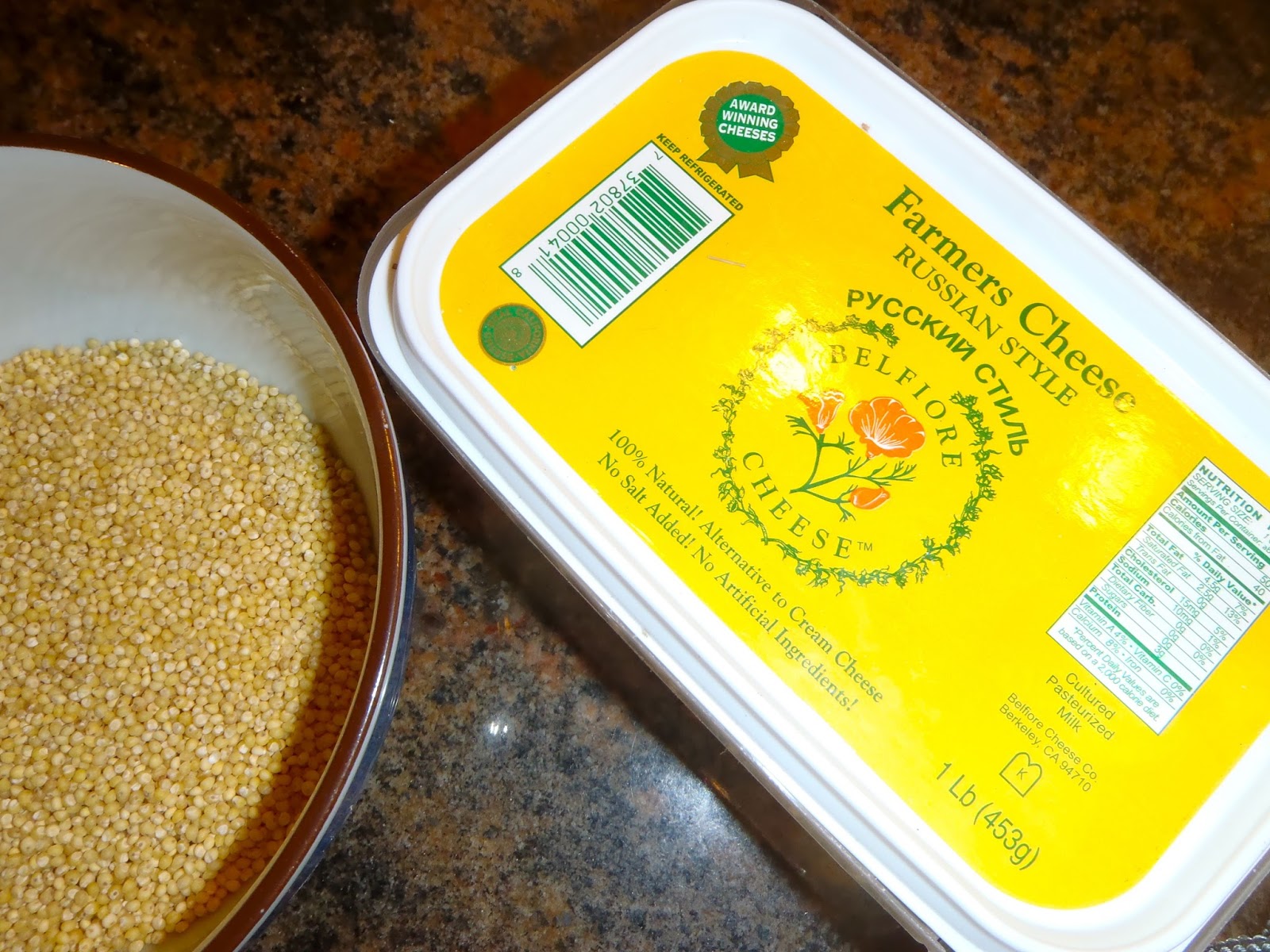One morning last spring, I had an urge for buckwheat crèpes. Was this part of the Slovenian cooking tradition? I had no idea.
I couldn't find any mention of thin buckwheat pancakes or palačinke in my vintage Slovenian American cookbooks, although I found many white flour versions, along with a recipe for cheese blintzes. When I turned to Kulinarika, the online Slovenian language site, I did find some ajdove palačinke recipes. Most used a combination of white and buckwheat flours.
So I went back to my Slovenian American sources to find a good, basic recipe to adapt. Compared to my previous palačinke recipe (a variation on šmoren) these older versions all seemed heavy on flour and light on the eggs. I settled on a recipe from the Progressive Slovene Women of America, which they included in a recipe for blintzes ("sirovi ponvičniki.")
I made just a few changes, in addition to replacing half the white flour with buckwheat. I also skipped the salt and added a little cinnamon and vanilla.
This recipe worked like a charm! Nothing stuck, not even that always-tricky first pancake. Each one looked perfect. They seemed slightly more substantial than usual, perhaps because of the dark buckwheat flour. Or maybe it had something to do with the egg-flour-milk balance. After years of trying to duplicate my mother's beloved "jelly rolls" (the name she always used) I had finally found a reliable recipe--and with a buckwheat tang.
That first morning, my husband and I enjoyed them just as I had as a child, with a selection of toppings: Fresh apples. Greek yogurt. Organic preserves. Honey-tahini spread from Kosovo. If only we'd had some farmer cheese on hand, I might have made cheese blintzes.
My husband must have read my mind, because later that day he picked up some locally made Russian-style farmers' cheese. We still had half the recipe of crèpes left, so I was all set for the next day's breakfast.
I used the filling recipe suggested by the Progressive Slovene Women, with a few modifications. Since farmer cheese is more moist than the dry curd cottage cheese used in their recipe, I skipped the two tablespoons sweet or sour cream. I also omitted the salt and added a touch of sugar, cinnamon and vanilla. I followed the "envelope fold" method I'd learned from my mother, although in Slovenia a simple rolled-up tube shape might be more common.
The result? Delicious!
And I had a bonus: I still had a half recipe of cheese filling left over. A few days later, I used it as the foundation for a much-improved version of curd cheese pancakes, or syrniki.
Buckwheat Palačinke or Crêpes
1/2 cup white flour
1/2 cup buckwheat flour
2 eggs
1-1/4 cup milk
dash of cinnamon
1/2 t. vanilla
Cheese Filling (to make blintzes)
1 lb. farmer cheese
1 egg
2 T. sugar
1/2 t. vanilla
1/4 t. cinnamon
For the palačinke or crêpes: Mix all ingredients until smooth and refrigerate for an hour. Heat a small or medium skillet with butter or oil. When drops of water dance on the surface, add just enough batter to cover the bottom of the skillet when rotated. When firm, flip over and cook until done. Store in a warm oven until all the pancakes are made.
Serve with fillings and toppings of your choice. Butter and brown sugar were my childhood favorites. Other good options: Greek yogurt, fresh fruit, jam or preserves, honey.
To make blintzes: Prepare the cheese filling by mixing all ingredients together until smooth. Refrigerate while you make the pancakes. When all the pancakes are cooked, place a generous spoonful of cheese filling in the lower middle of each one and fold up like an envelope. Brown in butter or oil. Or, if you prefer to avoid frying, they can be oven-baked. (Just remember that filling needed to be cooked because of the egg!) Serve with toppings as above.
















